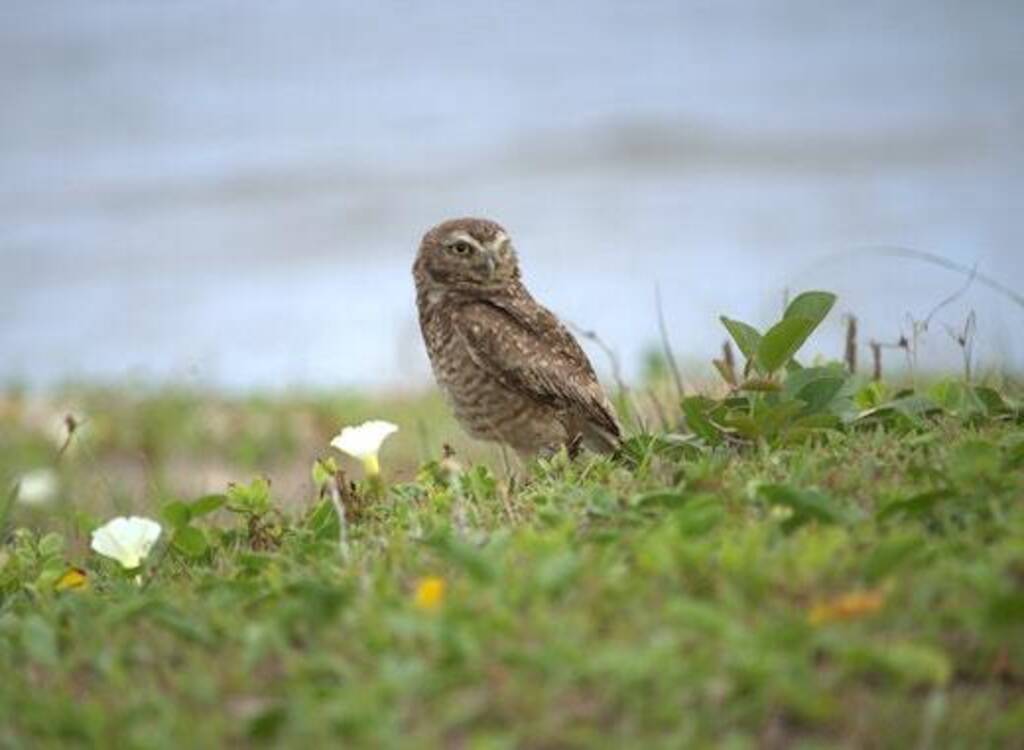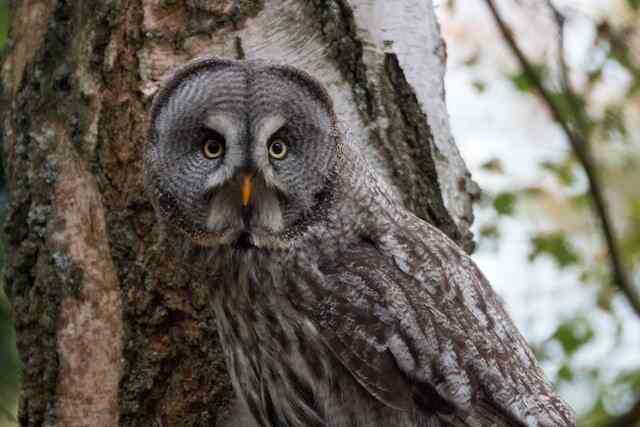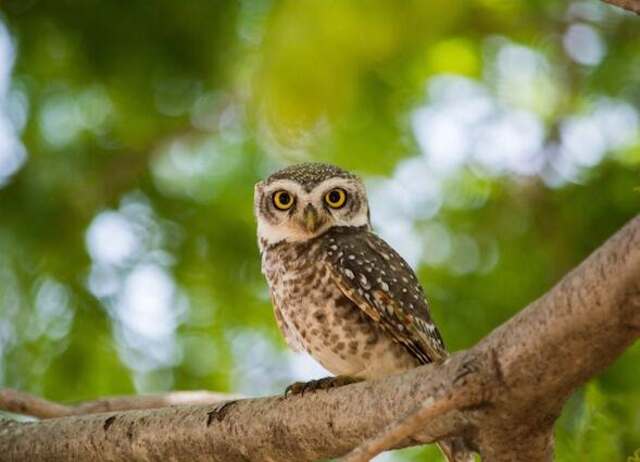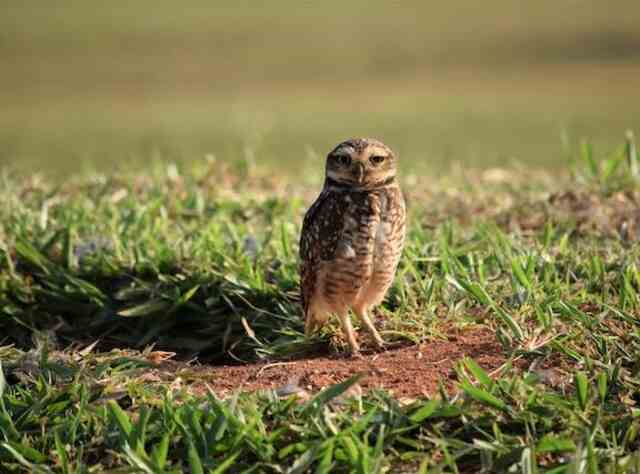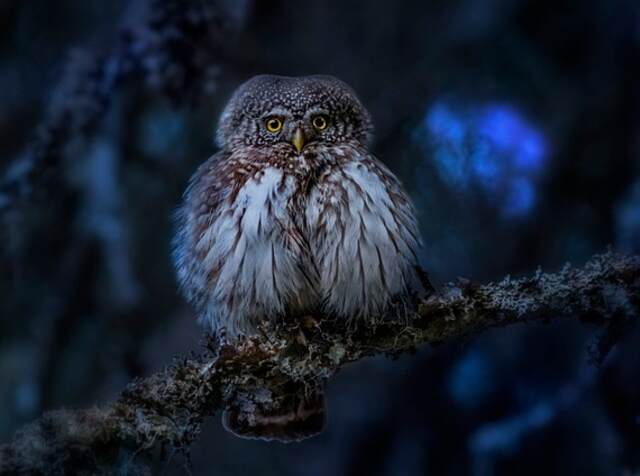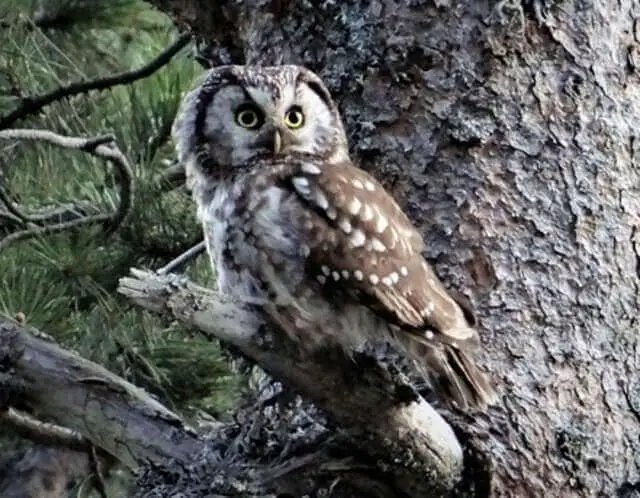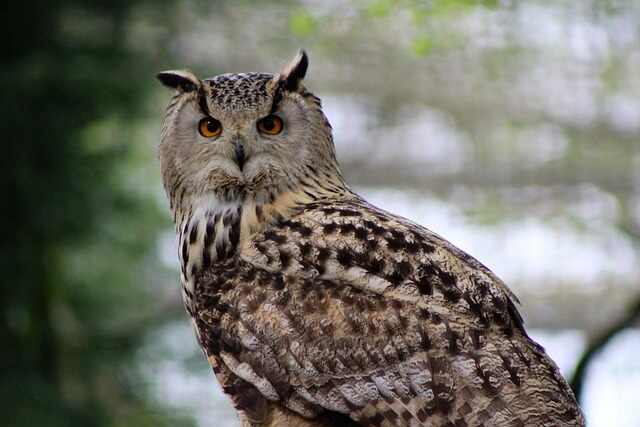Do owls eat worms? The short answer is yes, but that’s just the beginning of this fascinating topic. Whether you’re an owl enthusiast or just curious about these nocturnal predators, you’ll want to keep reading.
From the surprising diversity of owl diets to the unique adaptations that help them hunt, we’ll explore all the reasons why owls might choose to chow down on a slimy, squiggly worm. So grab a cup of coffee and let’s dive into the wild world of owl cuisine.
Table of Contents
Owls: More Than Just Rodent-Eaters
When it comes to owls, most people envision these magnificent birds of prey swooping down to catch a mouse or small bird. However, owls are opportunistic hunters that will consume almost anything that they can capture.
Depending on the species and their habitat, an owl’s diet may include rodents, rabbits, fish, insects, reptiles, and even other birds of prey.
Myth: Owls Only Eat Rodents and Birds
One common misconception about owls is that they only eat rodents and birds. While this is true for some species, such as the Barn Owl, others have adapted to hunt in different environments or prey on different types of animals.
For example, the Snowy Owl, found in the Arctic, may consume lemmings, voles, fish, and seabirds such as murres and puffins.
Great Horned Owl: A Fierce and Versatile Predator
Another example is the Great Horned Owl, which has a diverse diet that includes skunks, snakes, and porcupines. Due to its varied diet, the Great Horned Owl is often referred to as the “tiger” of the bird world.
Why the Misconception?
Rodents and small birds are commonly observed and more visible to humans. Therefore, people may be more likely to believe that owls exclusively feed on rodents and small birds.
Additionally, some owl species are more common in certain areas, which can create a skewed perception of their diet.
For instance, if you live in an area with a lot of Barn Owls but few other owl species, you might assume that all owls primarily eat rodents.
What Do Owls Eat?
Owls are known for being skilled hunters and are often associated with eating rodents and birds. However, their diet is much more varied than that.
The prey that an owl consumes depends on its species and habitat. Let’s take a closer look at the various types of prey that owls eat.
Rodents
Many owl species, such as the Barn Owl and the Great Horned Owl, primarily feed on rodents like mice, voles, squirrels and rats. They use their sharp talons to grab their prey and their strong beaks to tear into them. Some larger owl species like the Snowy Owl are even able to take down larger animals like hares.
Birds
While some owls primarily hunt rodents, others focus on catching birds. For example, the Northern Pygmy-Owl primarily feeds on small songbirds, while the Eagle Owl may prey upon larger birds such as geese or ducks. Owls use their silent flight to sneak up on unsuspecting birds before grabbing them with their talons.
Insects
Believe it or not, many owl species also eat insects as part of their diet! This includes moths, beetles, grasshoppers and even cockroaches! Some smaller species of owls will hunt insects exclusively, while others incorporate them into a more varied diet.
Fish
Owls that live near bodies of water may feed on fish as well! The Blackiston’s Fish Owl is one such example; this large owl has powerful talons that it uses to snatch fish from rivers or streams.
Other Prey
Depending on their location in the world, there could be other unusual items in an owl’s diet, such as snakes or lizards in warmer climates or even frogs when they’re particularly abundant. Overall, owls are incredibly adaptive hunters with a varied diet. They’re able to hunt prey in the air and on the ground, and switch to different types of prey depending on their environment.
Do Owls Eat Worms?
When we think of owls, the first thing that comes to mind is usually rodents or birds. However, it might come as a surprise to many that some owl species do indeed eat worms as part of their diet. While not all owls consume these earthy creatures, the ones that do find great benefit in them.
Worms are packed with protein and other nutrients that are essential for an owl’s diet. In fact, some experts suggest that eating worms provides such a high concentration of protein that worm-eating owls can survive off of them in times when other prey is scarce.
Additionally, worms have a high moisture content which is beneficial for hydration purposes. It’s difficult to say exactly how many owl species consume worms since not much research has been done on this topic.
However, we know that certain species such as the Eastern Screech-Owl and Northern Saw-whet Owl have been observed eating worms. These small owls are typically found in forested areas where they feed on a variety of prey including insects and small mammals.
While not all owl species eat worms, it’s important to note that these creatures play an important role in the ecosystem. Worms help break down organic matter which releases nutrients into the soil and promotes plant growth.
Thus, by consuming worms, certain owl species indirectly contribute to maintaining healthy ecosystems. In terms of hunting methods for worm-eating owls, they typically hunt on the ground rather than in trees or air like other owl species do.
They use their sharp talons to dig into soil and extract earthworms from their burrows underground. Some experts also suggest that these types of birds rely heavily on their keen hearing abilities to locate moving earthworms below ground.
It’s fascinating to learn about the diverse diets of different owl species and how they adapt based on their habitats and available prey options. While worms might not seem like the most appetizing food to us humans, they provide an essential source of nutrition for certain owl species.
Which Owl Species Eat Worms?
When we think of owls, we often picture them swooping down from trees to catch rodents or birds. However, some owl species have a slightly different menu – and worms are on the table! While not all owls eat worms, there are a few species that have been known to incorporate these wriggly creatures into their diets.
Barred Owl
The Barred Owl is a nocturnal bird of prey that is often found in forests and wooded areas. While they are skilled hunters, their diet is not limited to small mammals and birds. In fact, the Barred Owl is known to eat a wide variety of prey, including worms.
These birds have adaptations that help them locate their prey, including excellent eyesight, keen hearing, and silent flight. When it comes to eating worms, the Barred Owl may use its sharp beak to dig them out of the ground or pluck them off vegetation.
While worms may not seem like the most substantial meal, they provide an excellent source of protein and other essential nutrients for the Barred Owl. Overall, the Barred Owl’s diverse diet and unique adaptations make it a fascinating and adaptable species of bird. Watch this video of a barred owl eating a worm.
Eastern Screech-Owl
One such species is the Eastern Screech-Owl. These small, adorable owls are common in eastern North America and can be found in wooded areas and suburban parks alike.
While they do hunt for mice and other small prey like many other owl species, Eastern Screech-Owls also enjoy feasting on earthworms. These owls typically hunt for worms by walking on the ground at night.
They use their excellent hearing to locate moving earthworms underground. Once they’ve pinpointed their prey’s location, they pounce with deadly accuracy!
Northern Saw-whet Owl
Another worm-eating owl species is the Northern Saw-whet Owl. These tiny birds – just 7 inches tall – can be found in dense forests across North America. Despite their size, they’re fierce predators that hunt for a variety of prey, including mice and voles.
In addition to these more conventional meals, Northern Saw-whet Owls also consume earthworms when they’re available.
Like Eastern Screech-Owls, Northern Saw-whets often hunt for worms on the ground at night using their hearing to locate them.
Where Can These Owls Be Found?
If you’re interested in spotting a worm-eating owl in the wild, your best bet is to head to an area with plenty of trees and shrubs where these birds like to roost during the day.
Both Eastern Screech-Owls and Northern Saw-whet Owls can be found in wooded areas throughout the eastern United States and Canada. While these owls are relatively common, they’re also quite elusive.
Your best chance of spotting one is to listen for their calls at night or use a flashlight to scan trees for their distinctive silhouettes.
Keep your eyes peeled, and you just might catch a glimpse of one of these fascinating worm-eating predators!
How Do Owls Catch Worms?
Worms might not be the most glamorous of prey, but some species of owl have no problem adding them to their menu. But how do these raptors actually catch earthworms?
The answer may be surprising: they hunt for them on the ground, rather than in trees or air. As you may know, owls are nocturnal hunters and are known for their excellent hearing.
This is especially true for those that consume worms. These birds use their auditory senses to locate the sound of moving earthworms underground, sometimes from several inches away!
Once they have identified a target, some owls like the Northern Saw-whet Owl will quickly pounce with their talons. Others take a more patient approach.
For example, after locating an earthworm with its keen sense of hearing, an Eastern Screech-Owl will use its sharp beak to slowly pull the worm out of its burrow. But what about those times when there isn’t any sound?
How do owls find worms, then? Well, some species use their vision to spot earthworm movement along damp soil surfaces when searching through leaf litter or grassy areas.
Interestingly enough, despite being well-equipped with sharp talons and powerful beaks designed for catching prey like rodents and other small animals – many owl species that eat worms lack both!
Instead, these owls rely on fast reflexes and a tactical approach to capture their prey successfully.
While it may seem odd that some owl species eat worms as part of their diet – it just goes to show how diverse and adaptable these birds can be in finding food sources.
With keen hearing skills and impressive intuition combined with speedy reflexes – it’s no wonder they make successful hunters both in the air and on the ground!
| Using sharp talons | Owls use their sharp talons to dig into the soil and extract worms. | Great Horned Owl |
| Using beaks | Some owl species use their beaks to grab and pull worms out of the ground. | Barred Owl |
| Detecting sound | Owls can hear the sound of worms moving near the surface of the soil, and quickly grab them with their talons. | Eastern Screech-Owl |
| Hunting in low-light conditions | Some owl species, like the Barn Owl, have evolved to hunt in low-light conditions, making it easier to catch worms at night. | Barn Owl |
| Consuming already caught worms | Owls may also consume worms that have already been caught by other animals, like moles or other birds. | Snowy Owl |
Interesting Facts About Worm-Eating Owls
Omnivorous Diets
While some species of owls are carnivorous, consuming only meat, worm-eating owl species have been known to have omnivorous diets. It’s not just worms that they eat, but also other small invertebrates like snails and slugs.
These little creatures are good sources of nourishment for these small owls. They provide the necessary vitamins and minerals that help these birds survive their harsh environments.
Adaptations for Nocturnal Life
Owls are fascinating nocturnal creatures that have evolved a wide range of adaptations to help them thrive in the dark. Their large, forward-facing eyes are the most obvious adaptation, allowing them to gather as much light as possible in dim conditions.
They also have an incredible ability to turn their heads up to 270 degrees, enabling them to scan their surroundings without having to move their bodies. In addition to their eyes and necks, owls also have specially adapted feathers that allow them to fly silently, so they can sneak up on prey undetected.
Their keen sense of hearing is also essential for nocturnal hunting, with asymmetrical ear placement helping them locate sounds with pinpoint accuracy. Overall, these adaptations make owls formidable predators of the night, perfectly suited for life in the dark.
Variety in Sizes and Shapes
Within the category of worm-eating owls, there are a wide variety of shapes and sizes. For example, the Eastern Screech-Owl is a small bird that measures about 7–10 inches long, while the Northern Hawk Owl can be up to 24 inches long.
Also, noteworthy is the Barn Owl which has a distinctive heart-shaped face, while the Elf Owl is one of the smallest members of this group with an average length between 5–6 inches.
Range in North America
These types of owl species can be found throughout different regions in North America, depending on their habitat needs. Some can be found exclusively in forested regions such as the Barred Owl, while others prefer open areas such as fields or deserts like Burrowing Owls.
Conclusion
It turns out that when it comes to what owls eat, the answer is more varied than you may have initially thought. Not only do they consume rodents, birds, insects and fish, but some also enjoy a good earthworm or two.
Worm-eating owl species can be found in different sizes and shapes throughout North America and have adapted well to their nocturnal lifestyles. Whether listening for moving worms underground or catching other small invertebrates like snails and slugs, these owls are fascinating creatures that deserve our admiration.

